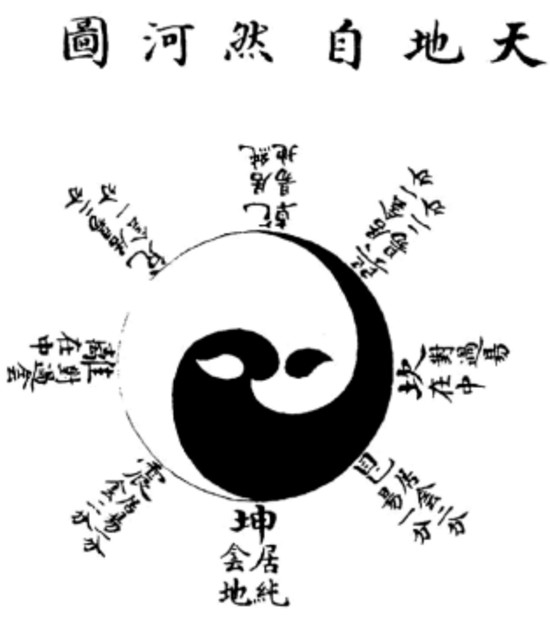|
Pa Kwa Chang
Baguazhang or Pakua chang () is one of the three main Chinese martial arts of the Wudang school, the other two being T'ai chi and Xing Yi Quan. It is more broadly grouped as an internal practice (or neijia quan). ''Bāguà zhǎng'' literally means "eight trigram palm", referring to the bagua "trigrams" of the '' I Ching'' (''Yijing''), one of the canons of Taoism.Lie, Zhang. “Classical Baguazhang Volume V: Yin Style Baguazhang.” Trans. Joseph Crandall. Pinole, California: Smiling Tiger Martial Arts 1995. History The creation of Baguazhang as a formalized martial art, is attributed to Dong Haichuan (), who is said to have learned from Taoist and Buddhist masters in the mountains of rural China during the early 19th century. Many Chinese authorities do not accept the Buddhist origin, instead maintaining that those teachers were purely Taoist in origin, the evidence lying in Baguazhang's frequent reference to core concepts central to Taoism, such as Yin and Yang theory, I Ch ... [...More Info...] [...Related Items...] OR: [Wikipedia] [Google] [Baidu] |
Internal Martial Arts
''Neijia'' ( 內家) is a term in Chinese martial arts, grouping those styles that practice ''neijing'', usually translated as internal martial arts, occupied with spiritual, mental or qi-related aspects, as opposed to an "external" approach focused on physiological aspects. The distinction dates to the 17th century, but its modern application is due to publications by Sun Lutang, dating to the period of 1915 to 1928. Neijing is developed by using ''neigong'', or "internal exercises", as opposed to "external exercises" (wàigōng 外 功). Wudangquan is a more specific grouping of internal martial arts named for their association with the Taoist monasteries of the Wudang Mountains, Hubei in Chinese popular legend. These styles were enumerated by Sun Lutang as Taijiquan, Xingyiquan and Baguazhang, but most also include Bajiquan and the legendary Wudang Sword. Some other Chinese arts, not in the Wudangquan group, such as Qigong, Liuhebafa, Bak Mei Pai, Zi Ran Men (Nature Box ... [...More Info...] [...Related Items...] OR: [Wikipedia] [Google] [Baidu] |
Bagua
The bagua or pakua (八卦) are a set of eight symbols that originated in China, used in Taoist cosmology to represent the fundamental principles of reality, seen as a range of eight interrelated concepts. Each consists of three lines, each line either "broken" or "unbroken", respectively representing yin or yang. Due to their tripartite structure, they are often referred to as Eight Trigrams in English. The trigrams are related to Taiji philosophy, Taijiquan and the Wuxing, or "five elements". The relationships between the trigrams are represented in two arrangements: the ''Primordial'' (), "Earlier Heaven", or "Fu Xi" bagua () and the ''Manifested'' (), "Later Heaven", or "King Wen" bagua. The trigrams have correspondences in astronomy, astrology, geography, geomancy, anatomy, the family, martial arts, Chinese medicine and elsewhere. The ancient Chinese classic, I Ching (Pinyin: Yi Jing), consists of the 64 pairwise permutations of trigrams, referred to as " hexagrams", a ... [...More Info...] [...Related Items...] OR: [Wikipedia] [Google] [Baidu] |
Gao Ziying
Gao , or Gawgaw/Kawkaw, is a city in Mali and the capital of the Gao Region. The city is located on the River Niger, east-southeast of Timbuktu on the left bank at the junction with the Tilemsi valley. For much of its history Gao was an important commercial centre involved in the trans-Saharan trade. In the 9th century external Arabic writers described Gao as an important regional power, and by the end of the 10th century, the local ruler was said to be a Muslim. Towards the end of the 13th century Gao became part of the Mali Empire, but in first half of the 15th century the town regained its independence and with the conquests of Sunni Ali (ruled 1464–1492) it became the capital of the Songhai Empire. The Empire collapsed after the Saadian invasion of the Songhai Empire, Moroccan invasion in 1591 and the invaders chose to make Timbuktu their capital. By the time of Heinrich Barth's visit in 1854, Gao had declined to become an impoverished village with 300 huts constructed fr ... [...More Info...] [...Related Items...] OR: [Wikipedia] [Google] [Baidu] |
Yin Sect Gao Style Baguazhang , known in Chinese as Lingyin.
{{dab ...
Yin may refer to: *the dark force in the yin and yang from traditional Chinese philosophy and medicine *Yīn (surname) (), a Chinese surname *Yǐn (surname) (), a Chinese surname *Shang dynasty, also known as the Yin dynasty **Yinxu or Yin, the Shang dynasty capital now in ruins *Yin (Five Dynasties period), a short-lived kingdom during China's Five Dynasties and Ten Kingdoms period *Yin Mountains, a mountain range in Inner Mongolia and Hebei province in China *Yin (, ''yǐn''), an office of early China sometimes equivalent to prime minister and sometimes to governor **Prime minister (Chu State) The post of prime minister (), translated as prime minister or chancellor, was an official government position established in the Chu state during the Spring and Autumn period of Chinese history (771 – 475 BCE). King Wu of Chu (reigned 740 – ... [...More Info...] [...Related Items...] OR: [Wikipedia] [Google] [Baidu] |
